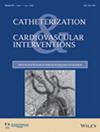Revisiting the Efficacy and Safety of Bivalirudin in Patients With ST-Segment Elevation Myocardial Infarction Undergoing Percutaneous Coronary Intervention: Insights From a Mixed Treatment Comparison Meta-Analysis of Randomized Trials
Abstract
Background
Randomized trials of bivalirudin in patients with ST elevation myocardial infarction (STEMI) have yielded heterogeneous results.
Aims
Our aim was to evaluate the efficacy and safety of four antithrombin regimens—unfractionated heparin (UFH), bivalirudin (stopped soon after percutaneous coronary intervention [PCI]), extended bivalirudin (continued for a few hours after PCI), and combined UFH and a Gp2b3a inhibitors (GPI) in patients who present with STEMI.
Methods
A PubMed, EMBASE, and clinicaltrials.gov databases were searched for randomized clinical trials (RCTs) of the above antithrombin in patients with STEMI. The primary outcome was net adverse cardiovascular events (NACE). The primary ischemic endpoint was major adverse cardiovascular events (MACE), and the primary safety endpoint was major bleeding, and other endpoints included all-cause mortality and stent thrombosis. The primary analysis compared the effect of these antithrombin regimens in reference to UFH using a mixed treatment comparison meta-analysis.
Results
In the 14 RCTs evaluating 25,415 patients with STEMI, when compared to UFH monotherapy, extended bivalirudin lowered NACE (OR = 0.71 with 95% CI: 0.53–0.96; moderate level of confidence) driven by a significant decrease in major bleeding (OR = 0.42 with 95% CI: 0.26–0.68; high level of confidence) without any significant difference in MACE or all-cause mortality. When compared with UFH monotherapy, UFH+GPI reduced risk of MACE (OR = 0.76 with 95% CI: 0.60–0.97; high level of confidence) but at the expense of an increase in major bleeding (OR = 1.48 with 95% CI: 1.11–1.98; high level of confidence) with no difference in NACE or all-cause mortality. For major bleeding, extended bivalirudin infusion ranked #1, bivalirudin ranked #2, UFH monotherapy ranked #3, and combined UFH and GPI ranked #4. For NACE, extended bivalirudin infusion ranked #1, bivalirudin ranked #2, combined UFH and GPI ranked #3, and UFH monotherapy ranked #4. Cluster plots for MACE and major bleeding demonstrated that extended bivalirudin had the best balance for efficacy and safety.
Conclusions
In patients undergoing PCI for STEMI, extended bivalirudin offers the best balance for primary ischemic (MACE) and safety (major bleeding) outcomes.

 求助内容:
求助内容: 应助结果提醒方式:
应助结果提醒方式:


